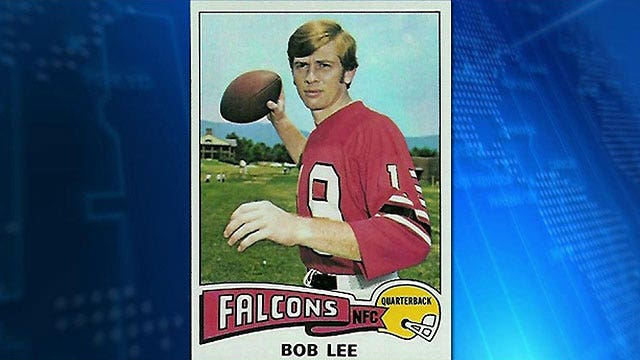With the so-called “deflate-gate” controversy still swirling around the New England Patriots, experts have explained the science of underinflated footballs to FoxNews.com.
Citing league sources, ESPN reported Tuesday that 11 of the 12 balls used by the Patriots during their Jan. 18 blowout AFC Championship win against the Indianapolis Colts were underinflated by two pounds of air pressure per square inch (PSI).
Game balls, which are inspected by the referee, must be inflated to 12.5 to 13.5 pounds per square inch.
Both Patriots quarterback Tom Brady and Head Coach Bill Belichick have pled ignorance. “I have always played within the rules,” Brady insisted at a Thursday press conference.
John Eric Goff, professor of physics at Lynchburg College in Virginia and author of “Gold Medal Physics: The Science of Sports,” told FoxNews.com that the league-mandated PSI range is ideal for playing football. “If, however, there’s rain or snow or something else happening, that would make the ball a bit slicker, so having a bit less pressure in the ball makes it easier to squeeze and the grip improves,” he added.
To illustrate his point, Goff used the example of palming a basketball. “A lot of us, our hands aren’t quite big enough to palm a basketball, but if you find a ball that isn’t inflated that well and squeeze it, it may be easier to palm,” he said.
Scientist Ainissa Ramirez, author of “Newton’s Football: The Science Behind America’s Game,” agrees that “grippiness” is the big benefit of a slightly inflated football. “If a ball is underinflated, it’s easier to throw, it’s easier to catch.”
Tom Brady completed 66 percent of his passes against the Colts, a game which was played in rainy conditions. The three-time Super Bowl winner was intercepted just once during the game. Colts Quarterback Andrew Luck connected on just 36 percent of his passes.
However, Dale Syphers, professor of physics at Bowdoin College in Brunswick, Maine, sees little impact on handling due to a ball that is two PSI too low. "Possibly noticeable, but much less important than the state of the surface of the ball," he told FoxNews.com, in an email. "Even strong receiver hands don't compress the football much around the thumb and fingers when caught. The difference is very small, and less than the variation found in handling the ball when playing under different weather conditions, and with different surface preparation of the ball."
While the debate continues about whether an underinflated ball is easier to throw and catch, science suggests minimal impact on how it travels through the air.
“If someone lets a bit of air out of it, it’s going to be a little less massive – it slows down a little bit faster with a little less air than it would do otherwise,” said Goff. “The benefit that you would gain from being able to grip the ball in a slick situation outweighs the slight deceleration increase.”
Goff also notes that letting a bit of air out would not affect the ball’s weight. “In a football, about 97.7 percent of its weight is in the actual material – the bladder, the laces, the leather - air only accounts for about 2.3 percent of the weight of the ball.”
"The effect on the flight of ball due to a ball that is 2 psi low is effectively zero - so small that you'd be hard pressed to measure a change with very sensitive equipment, and less than the natural variation between balls," added Syphers, in his email.
There has also been plenty of discussion about the weather’s potential impact on the footballs.
“As it gets a little colder, the pressure inside the ball will go down,” explained Goff. “When it gets colder, air molecules get more sluggish and are not hitting the football so hard, so the internal pressure goes down.”
Illustrating this point, Ramirez explained that an inflated balloon will deflate if placed in a freezer.
Temperatures in Foxborough, Mass,were in the low 50s when the game started at 6.40 p.m. ET on Jan. 18 , according to Accuweather, settling into the upper 40s by the time the game ended.
Overall, Bowdoin College's Syphers sees deflate-gate as a non-issue, and also notes a lack of clear guidelines for how balls are inflated in the NFL. "Add in the fact (and it is a fact) that current procedures for inflating balls are not clearly specified (done indoors at room temperature? controlling for humidity? done outside when the balls are at the field temperature?, etc.), this will result in balls that have at least a 3 psi difference at the start of a game over the course of a season (without air loss from use during the game due to tackles and spiking)," he explained, in an email.
With the deflate-gate furor continuing, one thing is certain - public interest in specialist science, like the physics of footballs, is at an all-time high.
“I am a scientist and an educator - this is fantastic for science,” she said, citing a great teaching opportunity. “This is a science event – it’s a perfect hook for teaching.”
The Patriots will face the Seattle Seahawks in Super Bowl XLIX on Feb.1.
This story has been updated with comments from Dale Syphers, professor of physics at Bowdoin College.
Follow James Rogers on Twitter @jamesjrogers

